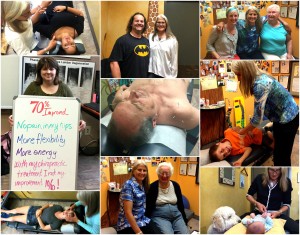Have you been diagnosed with arthritis and do you want to prevent it?
You can’t always prevent arthritis. Some causes—such as increasing age, family history, and gender (arthritis is more common in women) are out of your control. Yet there are a few health habits you can change to reduce your risk of developing painful joints as you get older. Many of these steps—like exercising and eating a healthy diet— prevent other diseases too.
Eat Fish:
Certain fish are rich in omega-3 fatty acids, a healthy polyunsaturated fat. Omega-3s have a number of health benefits- and may reduce inflammation in the body. A study in Annals of the Rheumatic Diseases found that women who eat fish regularly may be at lower risk for rheumatoid arthritis.
Your Body Weight:
Your knees have to support your body weight. Being overweight or obese can take a real toll on them. If you’re just 10 pounds overweight, the force on your knee as you take each step increases by 30 to 60 pounds. Overweight women are almost four times as likely to get knee osteoarthritis as women of a healthy weight are. Diet and exercise can bring your weight into a healthier range.
Exercise:
Not only takes the stress of excess weight off your joints. It also strengthens the muscles around the joints, which protects them from wear and tear. To maximize the benefits of your exercise program, alternate aerobic activities such as walking or swimming with strengthening exercises. Also add in some stretching to maintain your flexibility and range of motion. Discuss the best exercise options with Dr. Barbara Rodwin to aid with your joints, muscles, tendons, and ligaments! Everyone is different with what they can and cannot do based on their body types.
Avoid Injuries:
Over time, the joints can start to wear out. But when you injure your joint—for example, while playing sports or due to an accident—you can damage the cartilage in the joint and cause it to wear out more quickly. To avoid injury, always use the proper safety equipment while playing sports, and learn the correct exercise techniques. Using the right techniques when sitting, working, and lifting can help protect joints from everyday strains. For example, lift with your knees and hips—not your back—when picking up objects. Carry items close to your body, so you don’t put too much strain on your wrists. If you have to sit for long periods of time at work, make sure that your back, legs, and arms are well supported. If you have had prior injuries you should have a bio mechanical exam to detect where you have lost mobility before this creates problems and arthritis as you age!
Dietary Changes:
For those who suffer from rheumatoid arthritis it is important to include a diet that contains foods that are rich in vitamin B, vitamin E and zinc. It may also be important to ask if the following supplementation is right for you:
• Omega 3 Fatty Acids – these reduce inflammation and help prevent arthritis. It decreases tenderness in joints, reduces morning stiffness, and allows for a reduction in the amount of medication that people need.
• Omega 6 fatty acids – gamma-linoleic acid (GLA), may diminish joint pain, swelling, and morning stiffness, and may allow for lower amounts of pain medication.
• Selenium – is an essential mineral and antioxidant, and low levels of selenium in the blood may be associated with an increased risk of rheumatoid arthritis.
• Vitamin D – necessary to maintain cartilage
Some other natural remedies to consider asking about are:
• Black Cohosh – may help to reduce inflammation
• Ginger – has long been used in traditional medicine to decrease inflammation.
• Willow bark – can decrease pain and reduce inflammation.
• Capsaicin – applied topically, it is believed to deplete stores of a chemical that contributes to the pain and inflammation associated with arthritis.



We have created an informative video scribe explaining different treatment to prevent Arthritis/Degeneration and reduce the pain caused by this! Learn how Diane regained full motion of her arms in our touching Father-Daughter-Duo Testimonial featured this month!
Services and/or Products Available at Back to Health Wellness to Prevent Arthritis
Orthotex Knee Stabilizer Wrap for Osteoarthritis:
The Orthotex knee stabilizer is made from Orthotex fabric, an open 3-dimensional knit that is a non-latex alternative to neoprene. It offers breathability, elasticity, therapeutic compression, comfort and heat control. It is less hot to wear than neoprene, thus appropriate for long term wear or wear in warm climates, and ideal for wearers who are allergic to or irritated by neoprene fabric.
Metatarsal Pads:
Metatarsal pads are used to help spread your transverse arch (the arch behind the ball of your foot that runs across the width of your foot), promote the return of your overextended toes to their normal anatomical position, and encourage the return of your forefoot fat pad to its rightful position supporting your metatarsal heads. Your metatarsals are the long, thin bones in your mid-foot. The heads of your metatarsals are at the ball of your foot, and they connect to the base of your toes. Metatarsal pads help properly realign your metatarsal heads and the fat pad that’s underneath them. This, in turn, can help straighten and realign your toes, especially when your metatarsal pads are used in conjunction with our toe-spacing product (Correct Toes).
The conventional footwear features of heel elevation, toe spring, and toe taper can negatively affect your foot over time. After many years of weight-bearing activity in shoes possessing these design characteristics, your feet become shaped like the shoes you wear. Your toes become chronically overextended (pointed upward) and tapered toward your foot’s midline. The muscles under your foot, your flexors, become excessively stretched and weakened, while your extensors, on top of your foot, become too tight. In turn, your forefoot’s fat pad, which normally provides cushioning for your metatarsal heads and the nerves between them, becomes displaced too far forward. The bones and nerves in this area are then relatively unpadded and therefore vulnerable. This foot configuration can lead to a host of problems, including, but not limited to, Arthritis, Morton’s neuroma, sesamoiditis, and plantar fasciitis, or more simply: pain in the ball of your foot, heel, or both.
Metatarsal pads, when properly placed within a completely flat shoe with a sufficiently wide toe box, can help undo muscle imbalance in your foot. Metatarsal pads help reconfigure your foot to the position that nature intended; that is, with splayed metatarsal heads, splayed toes, and a fat pad located directly underneath the fragile bones and nerves in the ball of your foot. Numerous foot and lower extremity problems can be prevented or reversed by restoring your natural foot anatomy and function.
Acuballs:
The Acuballs patented design features apply 100% natural acupressure and heat:
1. Relaxes tight muscles,
2. Enhances joint movement,
3. Reduces nervous system irritation,
4. Stimulates blood flow to flush out built up muscle wastes,
5. Releases natural painkillers and sedatives,
6. Improves nervous system energetic flow.
The Acuballs specially designed acupoints and heat stimulate blood flow. This increases circulation, helping to ‘flush out’ built up toxins that accumulate in tight muscles causing pain. As these toxins release over time the muscle itself relaxes. Direct pressure from the acupoints also massages muscle and mobilizes joints, further enhancing pain free body movement. The acupoints also stimulate your Central Nervous System, like acupuncture does, to release natural painkilling, relaxing and mood enhancing chemicals like enkephalins and endorphins. Because of this, people who use the Acuball in bed, before retiring for the evening, often report enhanced feelings of relaxation and deeper sleep. When you use the Acuball on a tender area, you’ll notice that after three or four 20 minute sessions it’s a lot less tender than when you first started. Now you know why: wastes have been flushed out, muscle has been relaxed, joints have been mobilized, and your nervous system is much less irritated…and so are you!
Dr. Barbara Rodwin has made videos demonstrating and explaining how to use the Acuball and Acuball mini to effectively relieve pain in different areas of the body! Check them out on www.back2health4you.com and www.YouTube.com/Back2Health4You
Orthotics:
Orthotics are a commonly prescribed for chronic foot and back problems, to enhance performance during sports, and are also beneficial in the prevention and stabilization of arthritis in the knees
and hips. For anyone suffering lower body pain, orthotics are an option to be seriously considered. When foot imbalance is present, there is a negative impact on the knees, hips and pelvis, and spine.
Improper balance and function of the feet can lead to a variety of conditions including:
• Excessive rotation of the leg bones stressing the knee and twisting the pelvis and spine.
• Excessive rotation of the leg bones stressing the knee and twisting the pelvis and spine.
• Tilting of the pelvis which places tension on muscles and connective tissue, eventually resulting in chronic back problems.
• High levels of heel-strike shock from breakdown of the body’s natural ‘shock absorbers.’ The shock wave then transmits up the kinetic chain, resulting in painful symptoms up to the head, slowed recovery of leg and spine injuries, and aggravation of other conditions.
Bunions:
These are caused by the metatarsal arch being dropped and this arch when dropped spreads out the front of the foot. This causes the big toe to move in and develop a bunion. If you have these in the early stages metatarsal pads under this area will aid in restoring this arch which
then slows or stops the development of this bunion. The big toe joint loses motion when the toe moves in and develops the bunion, this joint can be worked on to restore motion which then aids in
decreasing bunion development, decreasing pain and stiffness! Feel free to book an appointment with Dr. Rodwin to have metatarsal pads put in your shoes. The cost for these is approximately $15 and this low cost and simple fix works wonders for your BUNIONS!
PFS – Patello-femoral syndrome:
Many patients come in with discomfort, stiffness, swelling, and pain in their knees. Often this issue is due to the tracking of the kneecap or patella. The patella can go out of alignment due to
foot alignment, hip imbalances, lower back issues or a direct issue with the knee. This joint when adjusted and placed back into alignment feels AMAZING! The adjusted does not hurt and involves re-aligning the kneecap to its normal position. When we walk, run, bike, go up and down stairs, sit and get up from a seated position the patella moves up and down in the groove it is in. If placed evenly in the groove patients do not have issues with this joint. If misplaced off to the side the patella will ‘rub’ on the groove placing stress on it and soft tissues around it.
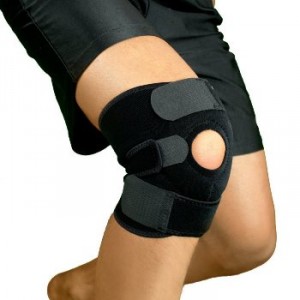
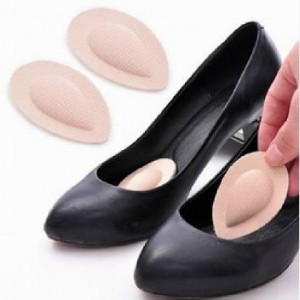
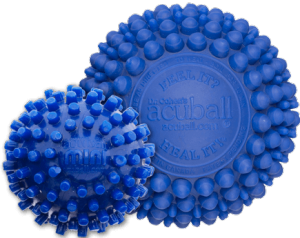
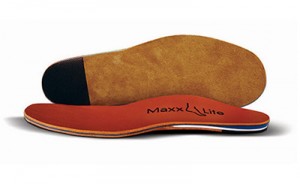
Early Arthritis as a Result of Electronic Usage
Texting is a quick and convenient way to get messages to friends and colleagues, but if you have a child – particularly a daughter – who is constantly texting, she could be headed for osteoarthritis down the road, says Yusuf Yazici, MD, of NYU Hospital for Joint Diseases in New York City. In a 2011 study of 257 children ages 9 to 15, girls who used cell phones reported twice as much pain as boys. The problem, says Dr. Yazici, is that the devices were not designed for children, whose bones and tendons are still developing. Injuries to those structures now, like other joint injuries, could precipitate the development of osteoarthritis in those joints later. Fifty years or older is usually the average age bracket for developing arthritis, but now experts say the bar has been lowered. It is the 23 hours adults spend texting and the seven hours children are gaming each day that are dooming our generation to develop arthritis, warns experts.
With the advent of texting and video games and excessive use of computers and typing you’re wearing the joints out sooner so we’re actually seeing a shift in the demographics of patients that get the arthritis because they’re just wearing their joints out so much sooner,’ Ciaglia, who works at Woodlands Center for Specialty Surgery in Texas, said. Experts have said that developing arthritis from texting, emailing and playing games has to do with the continuous motion of your fingers, combined with poor posture. Together they put a lot of strain on joints, tendons and muscles –creating a recipe for painful inflammation and stiff joints. ‘At the end of the day it’s a wear and tear how many times are you moving a joint back and forth where the cartilage that covers the bone within the joint,’ said Ciaglia. ‘The more things you do and the more aggressive you are with it the sooner you will develop this.’ Ciaglia understands that it is impossible for us to stop moving our fingers, but says ‘all good things in moderation’ and it is helpful not to do it eight, nine or 10 hours straight during the day.
WAYS TO AVOID ARTHRITIS FROM TEXTING, GAMING AND EMAILING FROM THE EXPERTS
1. Limit texting to short messages.
2. For a long message or a conversation, a phone call is actually a lot easier.
3. Always use good posture, no matter what the activity.
4. Take frequent breaks from gaming or texting.
5. The best advice is to break up texting or gaming into shorter sessions.
6. During those breaks, walk around, stretch, and shake out your wrists.
7. Avoid tension in your neck and shoulders.
8. Avoid keeping your wrists in a bent position for long periods of time.
SOURCE: Everyday Health
Cell phones are both a blessing and a curse for our generation. They provide us with easy communication and social media, but are said to be our downfall in social skills and communication in person. However, cell phones may be having an even more serious impact on our lives. “Doctors are starting to see growing numbers of young adults with arthritis pain today as a result of the gaming and texting they did as kids 5 or 10 years earlier.”, according to Everyday Health. A study was done and it proved that 1 in every 10 iPhone users report pain in their thumbs, showing signs of the dreaded texting arthritis. That is 10% of iPhone users having developing arthritis. Modern communications devices are associated with several painful repetitive stress and nerve compression injuries.
Cell phone elbow, otherwise known as cubital tunnel syndrome, is a tingling or numbness in the hands caused by a compression of the ulnar nerve when the elbow is flexed during lengthy gab sessions, and Guitar Hero wrist is tendonitis of the wrist brought on by overly vigorous strumming.
Then there’s so-called BlackBerry thumb, which strikes those who spend a lot of time sending rapid-fire missives from their mobile devices. “The difference between the computer age and the typewriter age is that people don’t stop,” said Dr. David Edelstein, orthopedic and hand surgeon at Maimonides Medical Center in Brooklyn, N.Y. “They are typing all day. During their lunch break they are using a mouse or texting, and they may go home and do more.”
In the most serious cases, excessive wear and tear and inflammation of the basal joint at the base of the thumb can lead to arthritis, Edelstein said. Thumb arthritis can cause hand pain, swelling, decreased strength and range of motion. “For every pound of pressure that you push at the tip of your thumb, it’s magnified at the base of your thumb,” Edelstein said. “Over time, this can lead to problems.” And it’s not just the thumb that can get sore. According to the Swedish researchers, excessive texting can also lead to neck and back pain. The researchers analyzed texting technique, muscular electrical activity and thumb movement using an electro goniometer, an electrical device that measures flexibility, in 56 young adults. Half complained of neck, arm or hand symptoms; half had no symptoms. Those with pain tended to text while hunched over, a position that puts strain on the neck and upper back muscles, according to the yet-to-be-published study. “I think it definitely does matter what position you stay in,” Edelstein said. “Hunching over is not a physiologically proper position.” Study participants with pain were more likely to use one thumb to text instead of both thumbs.
To prevent pain from texting, experts recommend:
• Avoid sitting in the same position for extended periods. Get up and take breaks.
• Pay attention to posture. When seated at a desk, your monitor should be at eye level, your arms should be bent at a 90-degree angle, your knees should be bent at 90 degrees and your feet should rest on the floor.
• Many people hunch over when texting because they’re trying to see the tiny keyboard. To keep from putting added pressure on your neck and upper back, rest the mobile device on your desk and lean against the chair’s backrest.
• Use both thumbs and give your thumbs a break when typing long messages.
• Stay active. “People who are more active outside of work and have good circulation will heal better than those who are less active and have poorer circulation,” Turkopp said.
Stay on top of your Pokémon Go game by holding your phone up to eye level. You’ll be able to see/catch Pokémon better and your body will thank you for it later!
Hips, knees, toes, fingers, thumbs, shoulders, neck, lower back……
Dr. Barbara Rodwin can adjust all parts of the body, and has successfully treated Arthritis in various body parts for over 20 years! Many think that Chiropractors only work with necks and backs, and that they have to live with different issues and pain in different parts of the body – but
this is not true! They can be checked and treated! Over the course of Dr. Rodwin’s years in practice she has been able to aid many patients with decreasing pain and restoring motion in these joints. By doing this it slows down the arthritic changes that can continue to occur, patients are able to get back to their hobbies and general daily activities!
